 |
Thiophenol or PhSH or Phenyl Mercaptan or Mercaptobenzene Supplier Exporter Manufacturers' Representative |
Email: info@ammol.org |
Call Toll Free +1-855-552-6665 |
Quick Links to Products: Phenol | Phenolphthalein | Phenoxyethanol | Thionyl Chloride | Thiophenol | Thiourea | Thymol | and more -- |
Thiophenol or PhSH or Phenyl Mercaptan or Mercaptobenzene
CAS Number: 108-98-5
Molecular Formula: C6H6S
Molecular Weight: 110.18
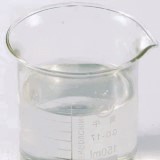
Thiophenol or PhSH or Phenyl Mercaptan or Mercaptobenzene
Thiophenol or Phenyl mercaptan or Mercaptobenzene SDS GHS, Safety Data Sheet
MSDS Sheet, Material Safety Data Sheet
1. Product Identification
Product Name/Synonyms: Thiophenol or PhSH or Phenyl mercaptan or Mercaptobenzene.
CAS No.: 108-98-5
EINECS EC No.: 203-635-3
Relevant uses and uses advised against (if any): Industrial Manufacturing.
Supplier: American Molecules, 9910 Bent Oak Dr, Houston, TX 77040, USA.
Call Toll Free: 1-855-55-AMMOL 1-855-552-6665.
In case of emergency contact: Will be given with the supply.
2. Hazards Identification
GHS, Globally Harmonized System Classification in accordance with 29 CFR 1910Hazard Class and Category Code(s), Regulation (EC) No 1272/2008 (CLP)
Flammable liquids (Category 3) H226
Acute toxicity, Oral (Category 2), H300
Acute toxicity, Inhalation (Category 2), H330
Acute toxicity, Dermal (Category 1), H310
Skin irritation (Category 2), H315
Eye irritation (Category 2), H319
Reproductive toxicity (Category 2), H361
Specific target organ toxicity - single exposure (Category 2), Nervous system, H371
Specific target organ toxicity - single exposure Respiratory system (Category 3), H335
Specific target organ toxicity - repeated exposure Kidney, (Category 1), H372
Labeling according Regulation (EC) No 1272/2008
GHS Label Elements 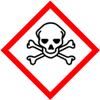 Toxic | GHS Label Elements 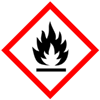 Flammable | GHS Label Elements 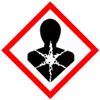 Health Hazard |
Signal Words: Danger
Hazard statements:
H226: Flammable liquid and vapor.
H300 Fatal if swallowed.
H310 Fatal in contact with skin.
H330 Fatal if inhaled.
H315 Causes skin irritation.
H319 Causes serious eye irritation.
H335 May cause respiratory irritation.
H361 Suspected of damaging fertility or the unborn child.
H371 May cause damage to organs (Nervous system) if swallowed.
H372 Causes damage to organs (Kidney) through prolonged or repeated exposure if swallowed.
Precautionary statements:
P210: Keep away from heat/sparks/open flames/hot surfaces – No smoking.
P233: Keep container tightly closed.
P240: Ground/bond container and receiving equipment.
P241: Use explosion-proof electrical/ventilating/light/…/equipment.
P242: Use only non-sparking tools.
P243: Take precautionary measures against static discharge.
P261: Avoid breathing dust/fume/gas/mist/vapors/spray.
P262: Do not get in eyes, on skin, or on clothing.
P264: Wash … thoroughly after handling.
P270: Do not eat, drink or smoke when using this product.
P271: Use only outdoors or in a well-ventilated area.
P280: Wear protective gloves/protective clothing/eye protection/face protection.
P312: Call a POISON CENTER or doctor/physician if you feel unwell.
P330: Rinse mouth.
P301+310: IF SWALLOWED: Immediately call a POISON CENTER or doctor/physician.
P302+P352+P310: IF ON SKIN: Wash with plenty of water. Immediately call a POISON CENTER/doctor.
P304+340+310: IF INHALED: Remove person to fresh air and keep comfortable for breathing. Immediately call a POISON CENTER/doctor.
P305+351+338: IF IN EYES: Rinse cautiously with water for several minutes. Remove contact lenses if present and easy to do – continue rinsing.
P370+378: In case of fire: Use dry chemical, foam, water spray, carbon dioxide for extinction.
P403+233+235: Store in a well-ventilated place. Keep container tightly closed. Keep cool.
P405: Store locked up.
P501: Dispose of contents/container to authorized agents only.
3. Composition/Information on Ingredients
Product Name/Synonyms: Thiophenol or PhSH or Phenyl mercaptan or Mercaptobenzene.
CAS No.: 108-98-5
EINECS EC No.: 203-635-3
Molecular Formula: C6H6S
4. First Aid Measures
Always seek medical attention after first aid measures are provided.
Inhalation: Remove to fresh air. If not breathing, give artificial respiration. If breathing is difficult, give oxygen. Get medical attention.
Ingestion: Never give anything by mouth to an unconscious person. Get medical attention.
Skin Contact: Wipe off excess material from skin then immediately flush skin with plenty of water for at least 15 minutes. Remove contaminated clothing and shoes. Get medical attention. Wash clothing before reuse. Thoroughly clean shoes before reuse. Get medical attention.
Eye Contact: Immediately flush eyes with plenty of water for at least 15 minutes, lifting lower and upper eyelids occasionally. Get medical attention immediately.
5. Fire Fighting Measures
Flammability of the Product: Flammable.
Products of Combustion: Carbon dioxide, Carbon monoxide, Sulfur oxides and fumes.
Explosion: Explosive in presence of heat.
Fire Extinguishing Media: Use dry powder or dry sand should be preferred. Do not use solid water stream. Flammable liquid and vapor. For small (incipient) fires, use media such as "alcohol" foam, dry chemical, or carbon dioxide. For large fires, apply water from as far as possible. Use very large quantities (flooding) of water applied as a mist or spray. Vapors are heavier than air and may travel to a source of ignition and flash back. Vapors can spread along the ground and collect in low or confined areas. Never direct a water jet in the container in order to prevent any splashing of the product which could cause spreading of the fire. Cool containing vessels with water jet in order to prevent pressure build-up, auto-ignition or explosion.
Special Information: In the event of a fire, wear full protective clothing and NIOSH-approved self-contained breathing apparatus with full face piece operated in the pressure demand or other positive pressure mode. At high temperatures, it may produce toxic or irritating fumes. Fire-extinguishing work is done from the windward and the suitable fire-extinguishing method according to the surrounding situation is used. Uninvolved persons should evacuate to a safe place.
6. Accidental Release Measures
Personal precautions, protective equipment and emergency procedures: Avoid breathing dust/fumes/gas/mist/vapors/spray. Use individual protective equipment (waterproof boots, suitable protective clothing, safety glasses, etc.). Restrict unprotected personnel from the area. Prevent any contact with hot surfaces. Do not approach facing the wind. Do not touch the spilled material.
Environmental precautions: Do not let the product enter drains, soil or water sources.
Methods and materials used for containment Cleanup procedures and Storage:
Remove all sources of ignition. Provide proper ventilation. Keep people away from and upwind of spill/leak. Entry to non-involved personnel should be controlled around the leakage area by roping off. Absorb the material on a porous, inert material such as earth, sand or vermiculite. Carefully sweep up the material without causing dust. Dispose of in accordance with local regulations.
Large liquid spillages should be contained by use of sand or another inert material. The spillage should be transferred to a suitable container and recovered or disposed of in accordance with local regulations. Because of the danger of spontaneous combustion, any combustible material, such as cloth, used for cleaning spillages, should be saturated with water and disposed of promptly, preferably by incineration.
7. Handling and Storage
Precautions for safe handling: Apply according to good manufacturing and industrial hygiene practices. Ensure proper ventilation. Wash thoroughly after handling. Do not drink, eat or smoke while handling. Avoid contact with skin, eyes and clothing. Minimize dust generation. Avoid breathing dust/fumes/gas/mist/vapors/spray. Avoid contact with eyes, skin, and clothing. Keep container tightly closed. Avoid ingestion and inhalation. Use individual protective equipment (waterproof boots, suitable protective clothing, safety glasses, etc.). Prevent any contact with hot surfaces. Wear suitable protective clothing. In case of insufficient ventilation, wear suitable respiratory equipment. Keep away from heat/sparks/open flame/hot surfaces. -No smoking. Take measures to prevent the buildup of electrostatic charge. Use explosion-proof equipment. Wash hands and face thoroughly after handling.
Conditions for safe storage, including any incompatibilities: Store in cool, dry and ventilated area away from heat sources and protected from sunlight in tightly closed original container. Keep air contact to a minimum. Do not leave the material container open. Store protected from light, heat, sparks and ignition sources and incompatible materials. Avoid contact with skin and eyes. Avoid inhalation of dust/mist/vapor. Do not store with incompatible materials like oxidizing agents, acids, bases, reducing agents. Store locked up. Keep away from sources of ignition - No smoking. Take measures to prevent the build-up of electrostatic charge.
8. Exposure Controls/Personal Protection
Airborne Exposure Limits: Not Established.
Ventilation System: A system of local and/or general exhaust is recommended to keep employee exposures as low as possible. Local exhaust ventilation is generally preferred because it can control the emissions of the contaminant at its source, preventing dispersion of it into the general work area.
Personal Respirators (NIOSH Approved): For conditions of use where exposure to dust or mist is apparent and engineering controls are not feasible, a particulate respirator may be worn. For emergencies or instances where the exposure levels are not known, use a full-face positive-pressure, air-supplied respirator.
Skin Protection: Wear protective gloves and clean body-covering clothing.
Eye Protection: Use chemical safety goggles and/or full face shield where dusting or splashing of solutions is possible. Maintain eye wash fountain and quick-drench facilities in work area.
Other Control Measures: Maintain good housekeeping in work area. Handle in accordance with good industrial hygiene and safety practice. Wash hands after handling.
9. Physical and Chemical Properties
Appearance: Colorless liquid.
Odor: Unpleasant.
Odor threshold: Not available.
pH: Not available.
Relative density: 1.077
Boiling Point: 169C literature.
Melting Point: -15C
Flash Point: 50C
Auto-ignition temperature: Not available.
Decomposition temperature: Not available.
Upper/lower flammability or explosive limits: Not available.
Vapor pressure: Not available.
Vapor density: Not available.
Evaporation rate: Not available.
Flammability (solid, gas): Not available.
Partition coefficient: n-octanol/water: Not available.
Solubility: Not available.
Viscosity: Not available.
Molecular Formula: C6H6S
Molecular Weight: 110.18
10. Stability and Reactivity
Stability: Stable under ordinary conditions of use and storage. Vapour/air-mixtures are explosive at high temperature.
Hazardous Decomposition Products: It emits Carbon oxides, Sulfur oxides & Fumes.
Hazardous Polymerization: Will not occur.
Incompatibilities: Strong oxidizing agents, Acids, Bases, Reducing agents.
Conditions to Avoid: Incompatibles, oxidizing agents, heat flame & light.
11. Toxicological Information
Fatal if inhaled, swallowed and in skin contact.
LD50 Oral - Rat – 46.2 mg/kg.
LC50 Inhalation - Rat - 4 h - 33 ppm.
LD50 Dermal - Rabbit - 134 mg/kg.
Carcinogenicity: Not listed by ACGIH, IARC, NTP, or CA Prop 65.
Epidemiology: No information found
Teratogenicity: No information found
Reproductive Effects: No information found
Mutagenicity: No information found
Neurotoxicity: No information found
12. Ecological Information
Environmental Toxicity:
Toxicity to fish: LC50 - Oryzias latipes (Japanese medaka) - 0,009 mg/l - 96 h.
Toxicity to daphnia and other aquatic invertebrates: EC50 - Daphnia magna (Water flea) - 0,0044 mg/l - 48 h.
Environmental Fate: Not available.
Mobility: Not available.
Persistence and Degradability: Not available.
Toxicity of the Products of Biodegradation: Not available.
13. Disposal Considerations
Whatever cannot be saved for recovery or recycling should be managed in an appropriate and approved waste disposal facility. Processing use or contamination of this product may change the waste management options. State and local disposal regulations may differ from federal disposal regulations. Dispose of container and unused contents in accordance with federal, state and local requirements.
14. Transport Information
DOT USA, TDG Canada & ADR/RID Europe:
Shipping Name: Phenyl Mercaptan.
Hazard Class: 6.1(3), Packing Group: I
UN Number: UN2337
IMDG/IMO:
Shipping Name: Phenyl Mercaptan.
Hazard Class: 6.1(3), Packing Group: I
UN Number: UN2337
15. Regulatory Information
USA:
California prop. 65: Contains no chemical subject to California Prop 65.
16. Other Information
European Labeling in Accordance with EC Directives:
H226 Flammable liquid and vapor.
H300 Fatal if swallowed.
H310 Fatal in contact with skin.
H330 Fatal if inhaled.
H315 Causes skin irritation.
H319 Causes serious eye irritation.
H335 May cause respiratory irritation.
H361 Suspected of damaging fertility or the unborn child.
H371 May cause damage to organs (Nervous system) if swallowed.
H372 Causes damage to organs (Kidney) through prolonged or repeated exposure if swallowed.
Disclaimer:
**************************
Our company provides this MSDS sheet in good faith but makes no representation as to its comprehensiveness or accuracy. This SDS sheet is intended only as a guide to the appropriate precautionary handling of the material by a properly trained person using this product. The above information has been compiled from various sources and has the possibility of discrepancy and being out-dated information. Individuals receiving the information must exercise their independent judgment and do further search in determining its appropriateness for a particular purpose. In no case shall our company be liable to loss or damages by the product user.
**************************
Please visit Main Page of Thiophenol or PhSH or Phenyl Mercaptan or Mercaptobenzene Suppliers.
American Molecules, also known as ammol.org is a distributor, supplier and manufacturers' representative of all types of Pharmaceuticals, Functional Ingredients, Excipients and Specialty Chemicals in Texas USA. Our principals manufacture supply and export USP NF BP, Ph Eur, etc grades of chemicals pure and reagent grade, mineral fortifiers, FCC food grade. Tailor made particle size and customized specifications are offered. The principal's facility is having one or more of the certifications like FDA approval and GLP, cGMP, ISO9001, ISO14001, ISO/IEC 17025, ISO22000, FSSC 22000, ISO45001, FSSAI, Kosher, HALAL, COPP, WHO-GMP certified and Written Confirmation (WC) for export to Europe is available. The manufacturers suppliers and exporters observe WHO Good Manufacturing Practices and Good Laboratory Practices.
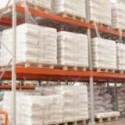
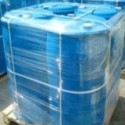
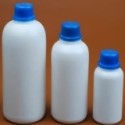
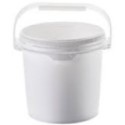

Suppliers and Manufacturers' Representative:

9910 Bent Oak Dr
Houston, TX 77040, USA
Call Toll Free: 1-855-55-AMMOL 1-855-552-6665
Email: info@ammol.org